Kenyan coffee bean flavor characteristics coffee bean variety flavor in Kenya coffee producing area
Kenya is located in eastern Africa, with the equator across the central part, Somalia to the east, Tanzania to the south, Uganda to the west, Ethiopia and Sudan to the north, and the Indian Ocean to the southeast. There are many plateaus in the territory, with an average elevation of 1500 meters. Kenya has a diverse climate, the whole territory is located in the tropical monsoon area, the coastal area is hot and humid, the plateau climate is mild, and the mountains above 3500 meters sometimes snow. The highest temperature of the year is 26 ℃ and the lowest is 12 ℃. To the south of the equator, there is mainly tropical forest and savanna climate; the coastal area is tropical, with high temperature and rainy throughout the year; the more inland, the drier the climate is, with the northern desert and semi-desert accounting for about 56% of the country. Affected by the monsoon climate, Kenya does not have four seasons with prominent temperatures, only the difference between the rainy season and the dry season.
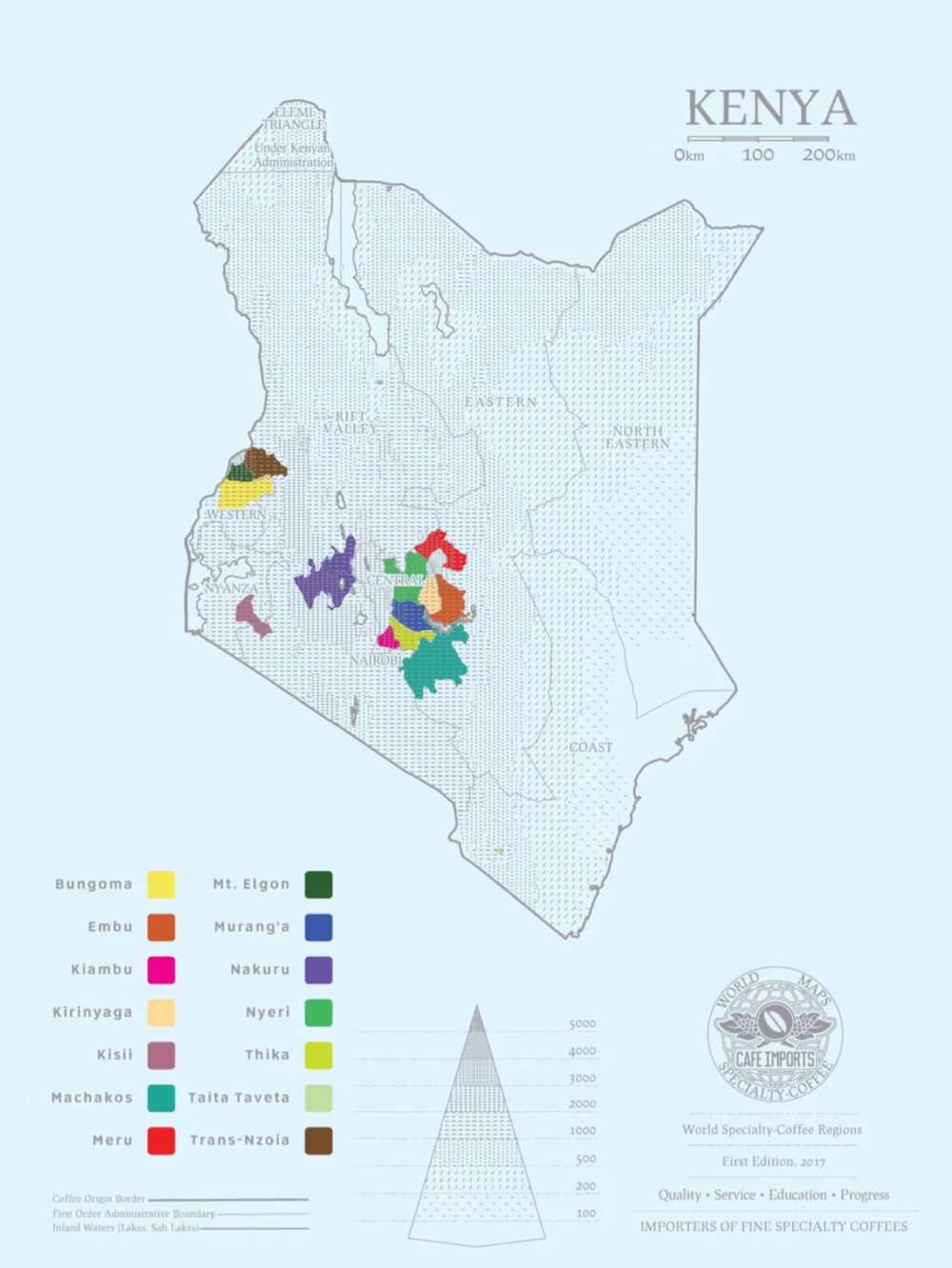
Most coffee in Kenya is grown at 1300-2000 meters above sea level; the average temperature is 15-24 degrees Celsius and the average annual precipitation is 9-1200 mm. The high-altitude highlands near Mount Kenya provide the best growing environment for coffee, including the Aberdare Mountains, Nyanza, Kisii, Bungoma, Kericho and Nakuru, where Arabica varieties were first introduced from Ethiopia.
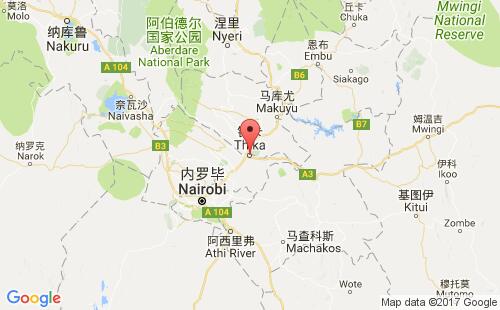
The number of coffee produced in central Kenya is the highest in the country, and the best quality coffee also comes from here. Coffee in western Kenya, such as Kisii, Trans-Nzoia, Keiyo, and Thika in the south of Marakwet, has also attracted attention.
As early as the 1930s, SL28 and SL34 were selected and planted nationally in Kenya through Scott laboratory screening. Because these two varieties have excellent berry acidity and were later transferred by some Central American estates, the Costa Rican COE champion beans were SL28 and Rosa the year before last.
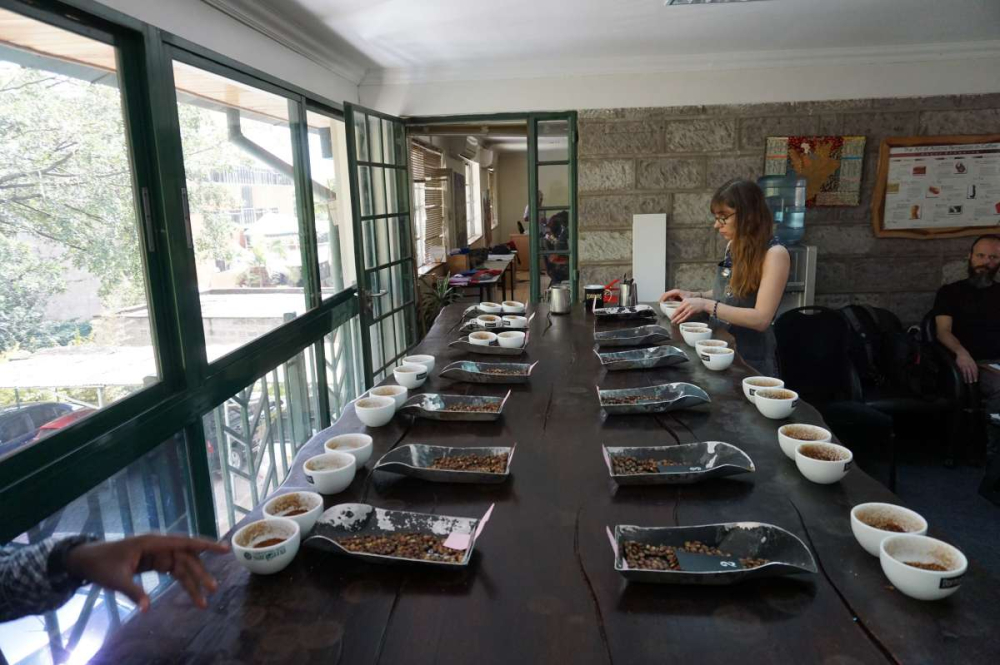
Since then, Kenya has spared no effort to develop varieties that are resistant to leaf rust. Ruiru11 is the first successful variety approved by the Kenyan Coffee Council, which can be understood as the Kenyan version of Katim. The Kenyan coffee beans mixed with Ruiru11 in the front street show a slightly less sweet and sour flavor and a slightly miscellaneous feeling. This also proves that the variety has an obvious effect on the flavor.
The bright sour front street of Kenyan coffee is inseparable from Kenya's characteristic water washing treatment-K72 water washing. Normal water
The washing process is to soak in the fermentation pool for 24-48 hours and then dry. The Kenyan process involves a 24-hour washing and fermentation process, then cleaning up the exfoliated pectin, fermenting for another 24 hours in a clean pool, and then fermenting for another 24 hours to 72 hours. This high degree of washing stably controls the quality and shows bright acidity and clean sweetness.
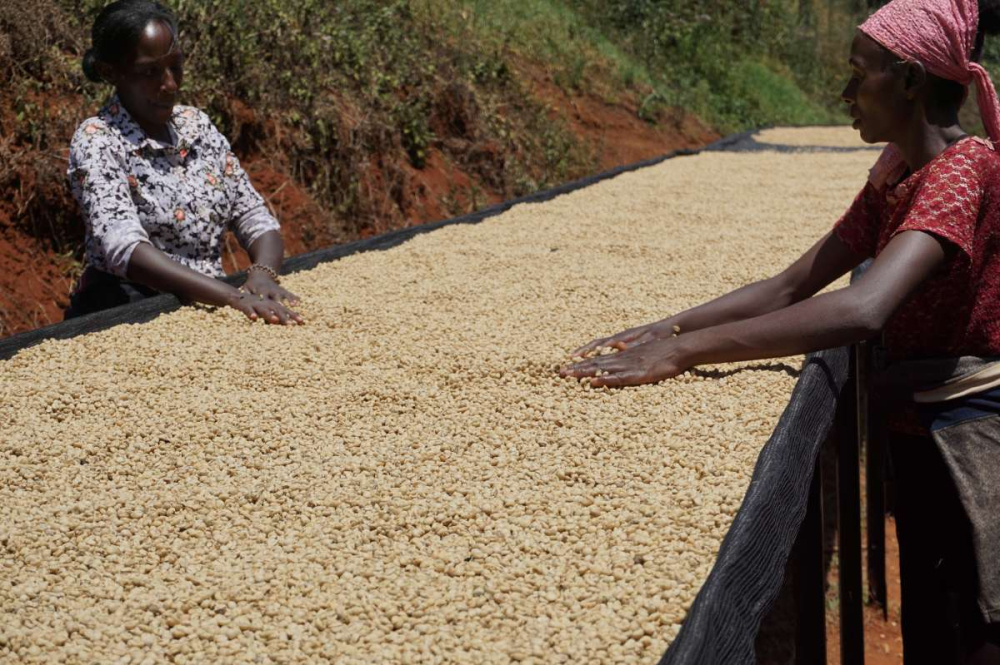
Then to Kenya's coffee grading system, Kenyan coffee beans are divided by size, the best is AA, followed by AB. The advantage of dividing by size is that after breeding, the large grains of coffee beans represent fullness, high quality, and are also very friendly to baking. In this way, we can ensure the unity of the quality of Kenyan coffee. Although we can still horizontally distinguish the specific flavor differences of Neri, Kirin Yajia, Kiambu and other producing areas, they are generally bright sour, small tomato and berry-like flavors with Kenyan characteristics. (that is, you can recognize Kenyan coffee at the first sip)
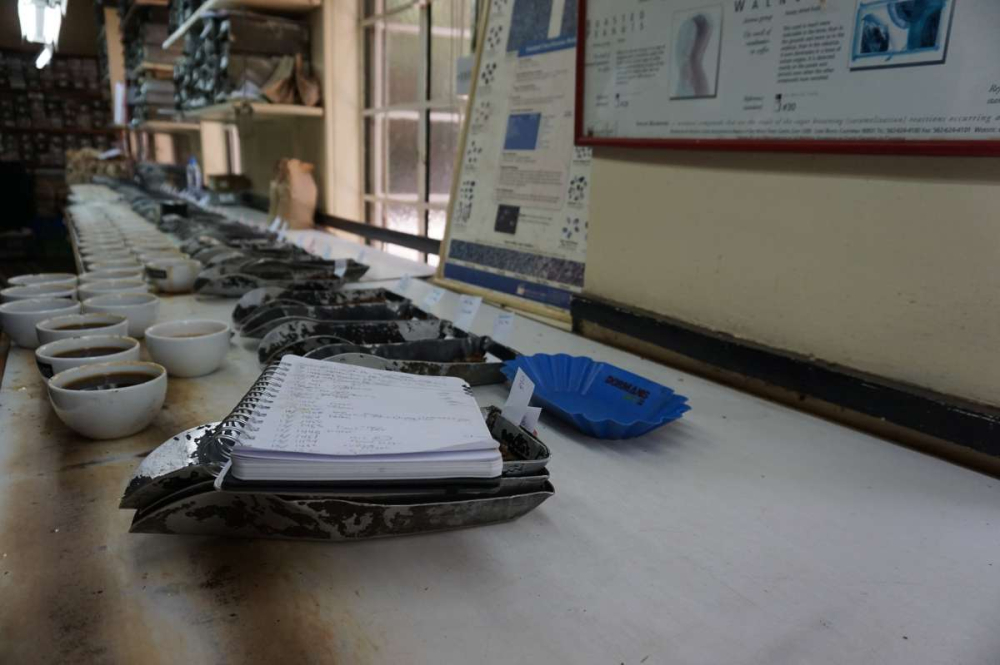
Now that you know the information about Kenyan coffee beans, you can make a cooking plan according to the characteristics of the beans. Kenny's high altitude, volcanic soil, good varieties, refined treatment, resulting in full beans, large beans, hard beans, beans look good. The problem that often occurs in cooking is the phenomenon of blockage in the water. In the grinding, Qianjie does not recommend too much fine powder, you can choose a better quality bean grinder, or use a powder sieve to sift out the fine powder, the thickness of which is 75% of the standard sieve 20.

In terms of water temperature, this Kenyan coffee is suitable for brewing at a higher temperature, which can make the coffee's fruit feel sweet (baby tomatoes). A water temperature of 93 degrees is recommended in front street.
Powdered water than Qianjie is recommended to use 1:16, Kenya this coffee itself solid taste, even if brewed to 16 times the ratio of powder to water does not reduce, and 1:16 flushed out of the concentration is very soft, bright Umei acid with sweet and sour aroma of baby tomato, very comfortable.
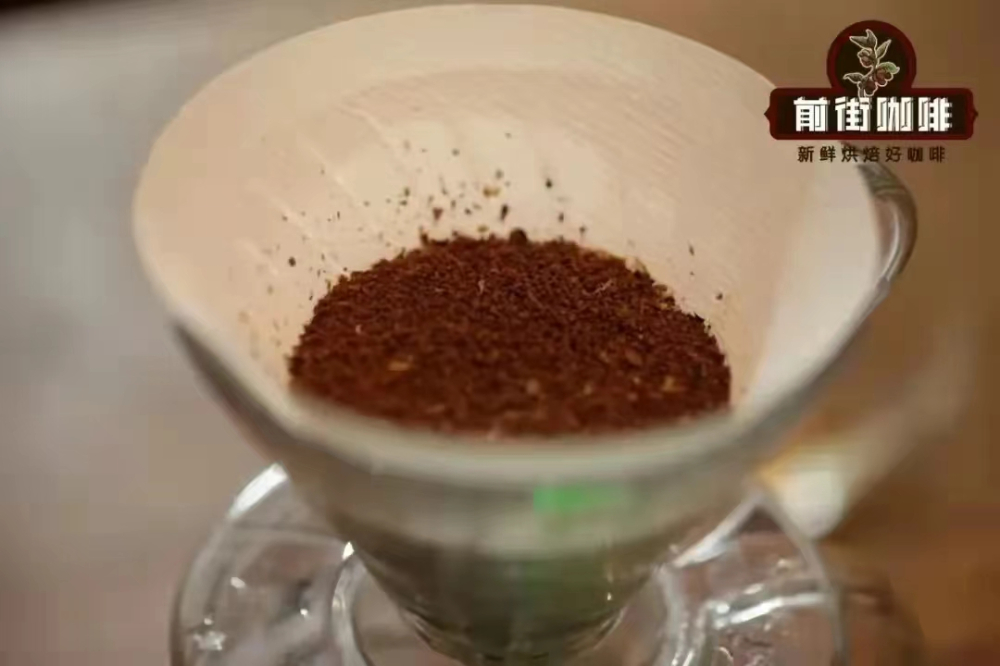
The amount of powder, if you use a small V60 filter cup, Qianjie recommends at least 15 grams of coffee powder, if you use a large V60 filter cup, it is recommended to use at least 25 grams of coffee powder.
When injecting water, the powder layer can be raised and less water can be injected around the big circle, so that the thickness of the powder layer can be thinned and fully extracted, and the blockage of (edge) channel and (bottom) can be avoided. First, the water of 30ml is injected into steam for 30 seconds, and the water of 120ml is injected into the second stage, and the water is injected in a circle from the center to the outside until the surface is covered with golden foam, and then the circle shrinks to the central point, and the height of the powder layer is up to 1 inch 2 of the short ribs.
Three segments of water injected into 90ml, and filled with water in a circle the size of a coin. After the coffee liquid is dripped into the sharing pot, finish the extraction for 2 minutes (error of 10 seconds).
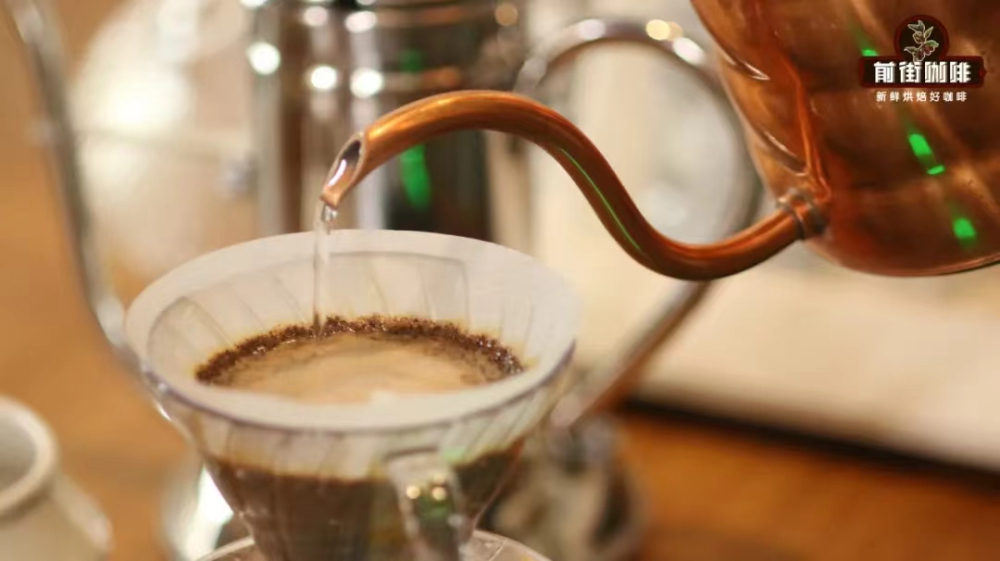
This brewing method not only highlights the aroma and sweetness of Kenyan coffee tomatoes, but also ensures the solid and transparent acidity of black plum.
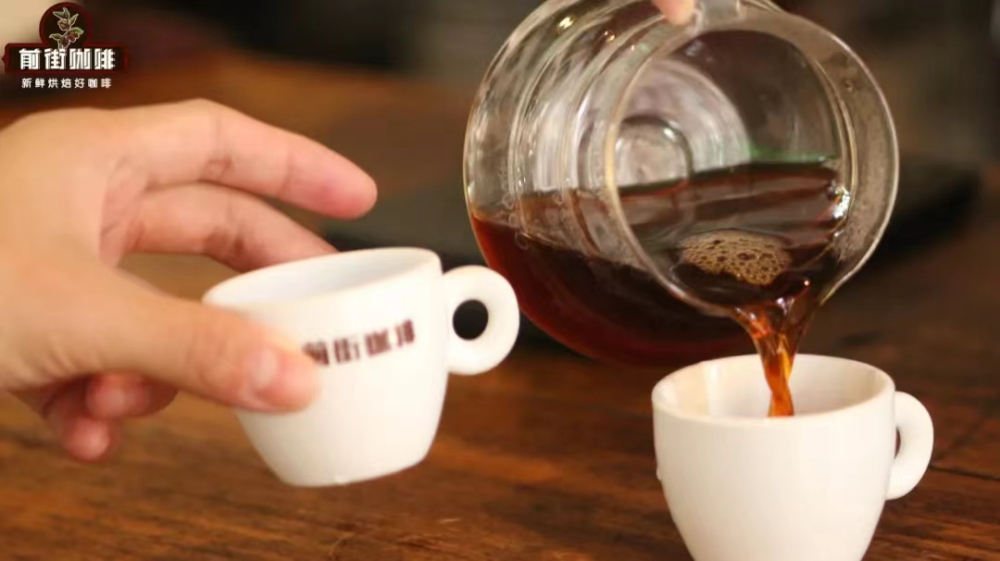
For more information about coffee beans, please follow the coffee workshop (Wechat official account cafe_style) and exchange professional coffee knowledge. Please add WeChat kaixinguoguo0925.
Important Notice :
前街咖啡 FrontStreet Coffee has moved to new addredd:
FrontStreet Coffee Address: 315,Donghua East Road,GuangZhou
Tel:020 38364473
- Prev
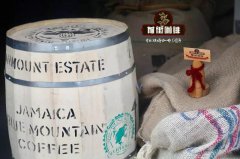
Columbia Palm & Big Bird Manor Coffee Flavor characteristics and Manor introduction
Professional coffee knowledge exchange more coffee bean information please follow Coffee Workshop (Wechat official account cafe_style) Colombia La Palma El Tucan Raul Gutierrez Mixed Process Colombian Palm Bird Manor [Community crop Project] Rau? Description of the flavor of Gudieres' small farmer double fermentation: rich aroma and milk of black sugar latte
- Next

Colombian Palm and Big Bird Manor what is anaerobic controlled lactic acid fermentation and sun drying
Professional coffee knowledge exchange more coffee bean information please follow Coffee Workshop (Wechat official account cafe_style) Colombian Palm and Big Bird Manor [Community crop Program] St. Rosa Manor Rosa smallholder anaerobic controlled lactic acid fermentation Origin: Cundinamarca (Kundinamaka) area producer: Saint Rose Manor-Rosa small Farmer altitude: 1600-18
Related
- Detailed explanation of Jadeite planting Land in Panamanian Jadeite Manor introduction to the grading system of Jadeite competitive bidding, Red bid, Green bid and Rose Summer
- Story of Coffee planting in Brenka region of Costa Rica Stonehenge Manor anaerobic heavy honey treatment of flavor mouth
- What's on the barrel of Blue Mountain Coffee beans?
- Can American coffee also pull flowers? How to use hot American style to pull out a good-looking pattern?
- Can you make a cold extract with coffee beans? What is the right proportion for cold-extracted coffee formula?
- Indonesian PWN Gold Mandrine Coffee Origin Features Flavor How to Chong? Mandolin coffee is American.
- A brief introduction to the flavor characteristics of Brazilian yellow bourbon coffee beans
- What is the effect of different water quality on the flavor of cold-extracted coffee? What kind of water is best for brewing coffee?
- Why do you think of Rose Summer whenever you mention Panamanian coffee?
- Introduction to the characteristics of authentic blue mountain coffee bean producing areas? What is the CIB Coffee Authority in Jamaica?

